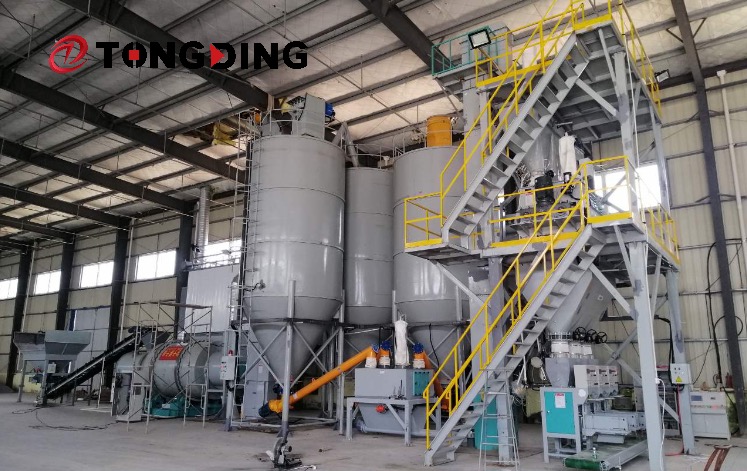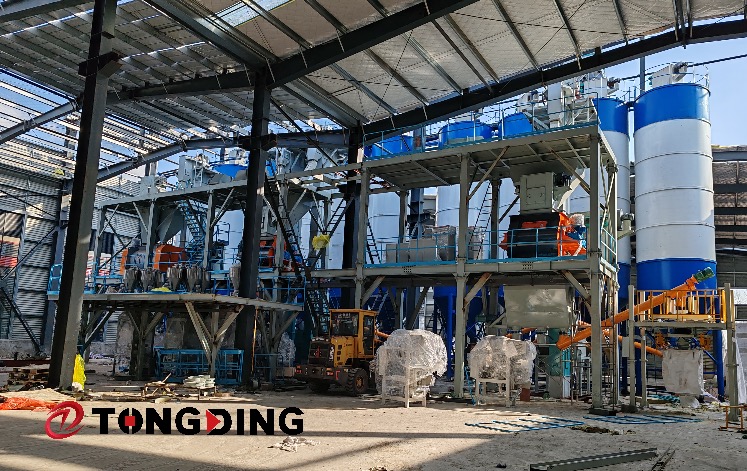News
-
 2024-06-27
2024-06-27Quartz Sand Triple Cylinder Rotary Drying Machine
An efficient and environmentally friendly Drying solution -Quartz Sand Triple Cylinder Rotary Drying Machine: Quartz sand is a natural mineral widely used in glass, ceramics, coatings and other industries. Because of its high light transmittance, high temperature resistance, corrosion resistance and other characteristics, it plays an important role in many industrial fields. However, quartz sand needs to go through many processes in the processing process, of which drying is a crucial part. How it works: Quartz Sand Triple Cylinder Rotary Drying Machine adopts advanced heat energy recovery technology to import the heated hot air into the cylinder, so that the quartz sand rolls in the cylinder and fully contacts the hot air. With the rotation of the drum, the quartz sand is constantly stirred and heated in the process of progress, so that the water gradually evaporates and is discharged by the exhaust port. At the same time, part of the exhaust gas is recovered through the thermal energy recovery system, which is used to heat fresh air, further improving the thermal efficiency. Features and advantages: High efficiency and energy saving Wide range of application High degree of automation Clean and environmental protection Application scenario: Glass industry Ceramic industry Coating...
-
 2024-06-26
2024-06-26What Are the Key Features of A Dry Mortar Mixed Production Line?
The main function of the dry mortar production line is to mix the dried and screened sand with cement, fly ash admixture and other materials in a certain proportion into masonry mortar, plastering mortar and floor mortar for construction, which is supplied to engineering construction in the form of packaging or bulk. According to the production capacity of the factory, the scale of the dry mortar production line is divided into tens of thousands of tons per year, mostly between 100,000 and 600,000 tons. According to the layout of dry mix mortar production line, there are tower type and two-stage type. The tower-type layout has smooth material flow, small footprint, but large structural cost. The two-stage layout increases the secondary lifting, the storage bin is mainly arranged on the ground, the equipment cost is low, and it is a more common form of application.
-
 2024-06-26
2024-06-26Development History of Dry Mortar Part Two
Dry mortar production originated in Austria and Finland. With the continuous improvement and improvement of the quality of wall material products, the wall is becoming more and more smooth, and it is no longer necessary to apply thick mortar to level the wall, only a very thin mortar can meet the purpose of wall plastering, and it is difficult to produce thin mortar in the field. Therefore, a Finnish company began to develop dry mortar products for thin layer mortar in 1958, began production and put into use in 1961, during which Germany also began to produce dry mortar. The development of dry mortar has undergone many changes in its production form since its inception. In the 1960s to the early 1970s, the dry powder mortar plant in Europe is a horizontal process, that is, each raw material silo is arranged on the ground, the raw material first enters the respective silo storage through the lifting equipment, the raw material released from the silo is weighed through the horizontal conveying equipment into the mixing machine, and the product storage bin is lifted after coming out. Finally, after packaging, bulk process factory. This way has become the first generation of dry...
-
 2024-06-24
2024-06-24Development History of Dry Mortar Part One
For thousands of years, the construction of houses cannot be separated from the use of inorganic mortar materials. Gypsum has been known for more than 8,000 years, and the Babylonians began using gypsum mortar about 6,000 years ago. The use of hydraulic mortar based on volcanic ash may have been more than 3,000 years ago, and the early ancient Phoenicians, Greeks and Romans used this material in large quantities. In the ancient and Middle Ages, additives such as soaps, resins, proteins and ash were used to mix them with inorganic adhesives and aggregates on the construction site to improve and enhance the performance of the mortar. As early as 1893, Europe published the first patent on the production and application of dry powder mortar. However, until the 1950s, dry mortar did not really develop, and the mortar used for construction was all on-site mixed mortar, that is, inorganic adhesive (cement in most cases) and aggregate (quartz sand in most cases) were transported to the site respectively, and then manually or mechanically mixed together in accordance with the appropriate proportion. Add water and stir to form mortar before use. In the 1950s and 1960s in Western Europe and the United States,...
-
 2024-06-24
2024-06-24A Dry Mixed Mortar Production Line With An Annual Output of 200,000 Tons
Main features of dry mortar production line: Main features of the dry mortar production line include a tower-type layout with top batching mode, significantly reducing material conveying time and improving production efficiency while lowering costs. The mixing system can be customized to accommodate output demands ranging from 4m3 to 12m3, featuring a large-capacity non-gravity dual-axis mixer with short mixing cycles and high accuracy. The entire equipment set is controlled in real-time by a PLC automatic control system, ensuring a high degree of automation management and creating a friendly working environment that enables high-yield and dust-free production while prioritizing environmental protection. Introduction to dry mortar production process: The main control system issues production instructions based on the selected process formula, and the system automatically extracts raw materials from the storage bin according to the proportion. After passing through the weighing and loading system, the raw materials enter the waiting mixing tank and the gravity-free high-efficiency mixer in turn, achieving fast mixing operations (3-5 minutes). After achieving the required mixing accuracy, the finished mortar is conveyed to the finished product storage tank with secondary mixing function, and enters the automatic filling process. A designed bag-type automatic packaging machine can be used for...
-
 2024-06-21
2024-06-21The Main Components of Dry Mortar
Dry mortar is a semi-finished mortar product that is accurately mixed and evenly mixed with the raw materials at the factory. At the construction site, it only needs to be mixed with water. Because there are many types of dry mortar, it is widely used. One of its biggest features is that it can play a role of adhesion, decoration, protection, and lining with a thin layer. For example, the mortar with the function of adhesion mainly includes masonry mortar, tile adhesive mortar, grout mortar, and anchoring mortar; the mortar with the function of decorative effect mainly includes various plastering mortar, interior and exterior wall putty, colored decorative mortar, etc.; the mortar with the function of protection includes waterproof mortar, various corrosion-resistant mortar, self-leveling floor mortar, wear-resistant mortar, thermal insulation and heat preservation mortar, sound-absorbing mortar, repair mortar, mold-proof mortar, anti-mildew mortar, shielding mortar, etc. Therefore, its components are also relatively complex, which can be summarized as consisting of adhesive materials, fillers, mineral admixtures, pigments, and additives. 1. Adhesive materials. The commonly used adhesive materials for dry mortar are: Portland cement, ordinary Portland cement, high-alumina cement, calcium silicate cement, natural gypsum, lime, silica fume, and mixtures of these materials. Portland...

